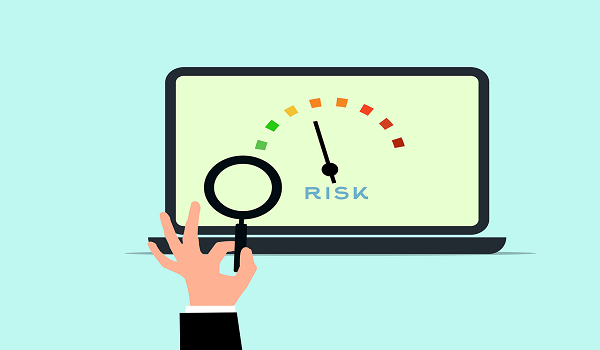Did you know that every minute, an industrial accident occurs somewhere in the world? Indeed, industrial risk prevention represents today one of the major challenges of modern industry. Faced with this alarming reality, how can companies effectively protect their teams and their operations? At first glance, this issue seems complex. However, concrete solutions exist. First, it must be understood that industrial safety is no longer limited to simple regulatory compliance. In fact, it now constitutes a genuine operational performance lever.
More than a legal requirement, it has become a strategic component of industrial risk management, ensuring both employee safety and business continuity in high-risk environments.
In this article, we will therefore examine modern prevention strategies. Furthermore, we will discover how digitalization is revolutionizing this approach. Finally, we will see how to optimize your operational performance through new technologies.

Key Points to Remember Regarding Industrial Risk Prevention:
- Major challenge: Industrial risk prevention protects human lives and performance
- Economic impact: Accidents cost on average €150,000 per incident
- Digital solutions: Digitalization reduces errors by 40%
- Legal obligation: The DUERP is mandatory for all companies
- Proven ROI: Each euro invested in prevention returns €4 in savings
1. Industrial Risk Prevention: Understanding the Fundamentals
Industrial risk prevention encompasses all measures aimed at anticipating and reducing hazards.
First, it protects people. Then, it preserves the environment and equipment. This fundamental approach targets three priority objectives:
- Personnel protection: avoiding workplace accidents and occupational diseases
- Environmental preservation: preventing pollution and contamination
- Equipment protection: avoiding costly degradation and destruction
1.1. Definition and Stakes of Risk Prevention
To begin, let us precisely define this concept. Industrial risk prevention consists of identifying, evaluating, and controlling potential hazards. This proactive approach makes it possible to prevent accidents before they occur.
According to INRS statistics, 700,000 workplace accidents occur each year in France. Nevertheless, 90% of these incidents could be avoided through effective prevention. These figures underscore the crucial importance of a well-thought-out strategy.
1.2. Classification of Major Industrial Risks
1. Technological Risks
First, technological risks dominate the industrial landscape. They include:
- Chemical and mechanical hazards
- Thermal and explosion risks
- Electrical risks
Similarly, these risks require particular attention in any prevention strategy.
2. Human Risks
Second, human risks represent 80% of accidents according to the ILO. The main causes include:
- Handling errors
- Training deficiencies
- Negligence
This is why standardization of operational processes becomes essential.
3. Environmental Risks
Third, environmental risks are gaining importance. They include:
- Accidental pollution
- Contamination
- Noise and atmospheric nuisances
Consequently, Industry 4.0 offers real-time monitoring solutions.
2. Operational Excellence: Identification and Evaluation Methods
Operational excellence requires a rigorous risk analysis methodology. Indeed, this systematic approach ensures comprehensive coverage of potential hazards.
The pillars of this excellence rest on:
- Systematic methodology: ensures comprehensive coverage of potential hazards
- Proactive approach: anticipates problems before they occur in the industrial environment
- Continuous improvement: constantly perfects safety processes and operational performance
2.1. Key Steps in Risk Assessment
Phase 1: Hazard Identification
First, hazard identification constitutes the first crucial step. This phase requires:
- A complete audit of equipment and operational processes
- An in-depth analysis of existing operating procedures
- Valuable feedback from field operators
Moreover, this information gathering brings invaluable value to the approach.
Phase 2: Process Analysis
Analysis of operational processes then follows this identification. This step allows evaluation of:
- The probability of occurrence of each identified risk
- The potential severity of possible consequences
- The impact on overall operational performance
Thus, precise risk prioritization becomes possible and exploitable.
Phase 3: Preventive Measures
Finally, implementing preventive measures effectively closes the process. These actions include:
- Collective and individual protection of collaborators
- Regular updating of safety procedures
- Integration of new industrial digitalization technologies
Furthermore, these procedures must be regularly updated to maintain their effectiveness.
2.2. Regulatory Tools and Compliance
The Single Document for Occupational Risk Assessment (DUERP)
The DUERP remains the essential tool for industrial risk prevention. This legal obligation presents several advantages:
- Structures the preventive approach of any industrial company
- Defines a plan of concrete and measurable actions
- Ensures mandatory regulatory compliance
Moreover, it constitutes the basis of any operational performance approach.
Specialized Prevention Plans
Particular safety implementation plans effectively complement this regulatory framework. In case of emergency, these procedures:
- Save precious human lives
- Organize coordinated emergency response
- Minimize the impact of industrial incidents
This is why their digitalization becomes an absolute priority.
The Seveso Directive for Critical Sites
The Seveso directive strictly governs major risk sites. These specific regulations require:
- Continuous monitoring of critical installations
- Appropriate and dimensioned intervention means
- Complete traceability of all sensitive operations
3. Industrial Digitalization: Revolutionizing Prevention
Industrial digitalization radically transforms the traditional safety approach. Now, new technologies offer unprecedented possibilities for prevention and continuous monitoring.
This technological revolution is based on three major axes:
- IoT technologies: real-time monitoring of critical industrial equipment and processes
- Artificial intelligence: advanced predictive risk analysis and early fault detection
- Augmented reality: innovative immersive training and secure operational guidance for all

3.1. Innovative Technologies for Safety
First, the smart factory integrates IoT sensors everywhere. These devices collect real-time data on equipment. Consequently, anomalies are detected before they become critical.
Artificial intelligence analyzes these masses of data. It identifies patterns invisible to the human eye. Thus, predictive maintenance gradually replaces corrective maintenance.
Connected glasses revolutionize operator training. They display instructions directly in the field of vision. This technology considerably reduces handling errors.
3.2. MES and ERP Solutions for Traceability
MES (Manufacturing Execution System) systems ensure complete operational monitoring. They record every action and decision made in the field. This traceability facilitates post-incident analysis.
Integration with ERPs allows an overview of operations. Data automatically flows up to performance dashboards. Thus, managers can react quickly to deviations.
Operational data connectivity eliminates information silos. All services access the same updated data. This transparency improves team coordination.
4. Continuous Improvement: Optimizing Operational Performance
Continuous improvement constitutes the heart of any effective prevention strategy. This philosophy transforms failures into learning and improvement opportunities.
- Lean manufacturing: elimination of waste and optimization of safety flows
- Visual management: real-time display of performance indicators
- Continuous training: permanent development of safety skills. This approach is essential for fostering Continuous Improvement in a Production Workshop, where small, incremental changes lead to sustainable gains in efficiency, safety, and quality.
4.1. Lean Manufacturing and Process Management
Lean manufacturing eliminates waste and optimizes flows. This method identifies potential sources of risks in processes. Furthermore, it standardizes good safety practices.
When integrated into a broader manufacturing operations management strategy, Lean methods ensure consistent safety, efficiency, and quality across the production environment.
Visual management facilitates real-time performance management. Safety indicators are displayed on dedicated screens. Therefore, each collaborator knows the current situation.
The PDCA loop (Plan-Do-Check-Act) structures continuous improvement. Each incident is subject to in-depth analysis. This feedback constantly enriches procedures.
4.2. Training and Skills Development
Digital training personalizes each operator’s learning. Interactive modules adapt to individual pace. This approach significantly improves safety instruction retention.
Digital certifications track acquired skills. They automatically identify recycling needs. Thus, no collaborator works without appropriate qualification.
Virtual reality simulates dangerous situations without risk. This technology allows experimenting with proper reactions. Consequently, safety reflexes develop naturally.
5. Performance KPIs: Measuring and Managing Safety
Performance indicators transform safety into objective and exploitable data. This quantitative approach guides strategic and operational decisions.
Effective safety management relies on:
- Safety KPIs: frequency and severity rates of industrial accidents
- Proactive indicators: number of audits conducted and training sessions delivered
- Predictive analysis: identification of problematic trends
5.1. Dashboards and Key Indicators
Safety KPIs must be relevant and measurable. The accident frequency rate constitutes the reference indicator.
Near-misses provide valuable warning signals. Their systematic monitoring allows anticipating real accidents.
Proactive indicators complement this approach. The number of safety audits conducted measures preventive commitment.
5.2. Data Analysis and Decision Making
Predictive analysis identifies trends before they become problematic. Algorithms detect correlations between different risk factors.
Automated reports compile data from multiple sources in minutes. Consequently, managers focus on analysis.
Data reliability conditions decision quality. This is why automatic input replaces manual input.
6. Picomto Solutions: Operational Excellence Within Reach
Picomto revolutionizes risk prevention through its innovative digital solutions.
Our platform offers:
- Digital operating procedures: standardized interactive procedures
- Intelligent checklists: mandatory verifications to guarantee safety
- Complete integration: compatibility with all ERP and MES systems
6.2. Digitalization of Operating Procedures
Creating digital operating procedures simplifies standardization. These interactive procedures guide operators step by step.
Intelligent checklists guarantee compliance with safety instructions. No step can be omitted or neglected.
Usage data analysis identifies improvement points. This information continuously optimizes procedures.
6.3. Integration and Connectivity
Integration with existing systems preserves investments. Picomto easily connects to existing ERPs and MES.
Operational information sharing becomes fluid and instantaneous. Updates automatically propagate to all workstations.
Mobility allows accessing information everywhere. Tablets and smartphones become secure work tools.
Request a personalized demonstration!
Conclusion: The Future of Industrial Risk Prevention
Industrial risk prevention is undergoing major transformation through digitalization. This evolution offers unprecedented opportunities to reconcile safety and operational performance. Tomorrow's winning companies are those that:
- Integrate IoT technologies and artificial intelligence today
- Adopt a comprehensive quality-safety-productivity approach
- Invest in digital training for their teams
No longer suffer accidents, anticipate them. Transform your safety approach now to secure your company's future.
FAQ
How to prevent industrial risks?
Identify, evaluate, and control hazards through a systematic and proactive approach.
What are the 3 risk prevention measures?
Collective protection, individual protection, and continuous training of field teams.
What are the 4 prevention tools?
DUERP, prevention plans, safety audits, and mandatory training.
What are the different industrial risks?
Technological, human, and environmental risks according to their origin and impact.
How to reduce risks in industries?
Procedure digitalization, predictive maintenance, and continuous process improvement.






Leave A Comment